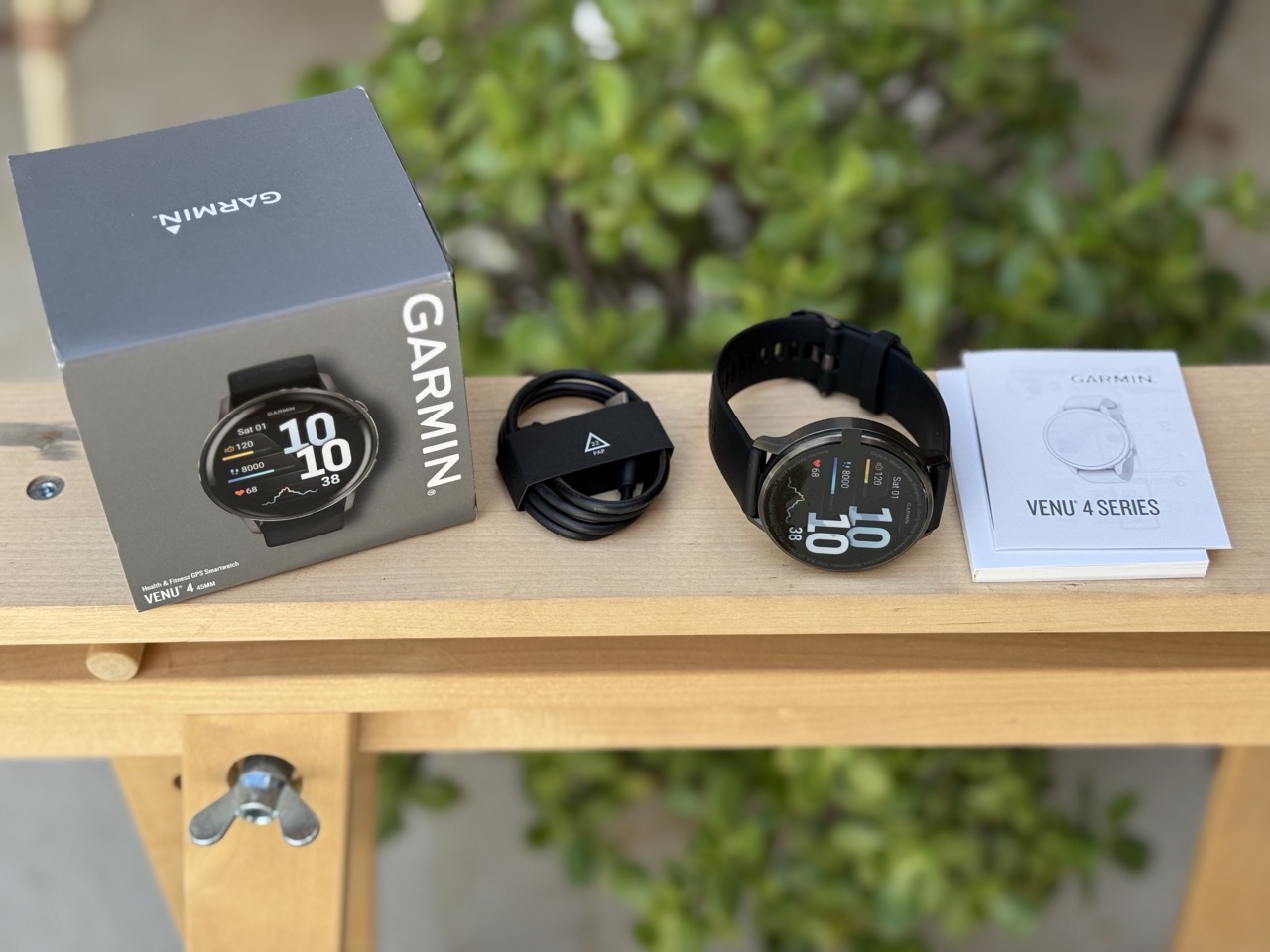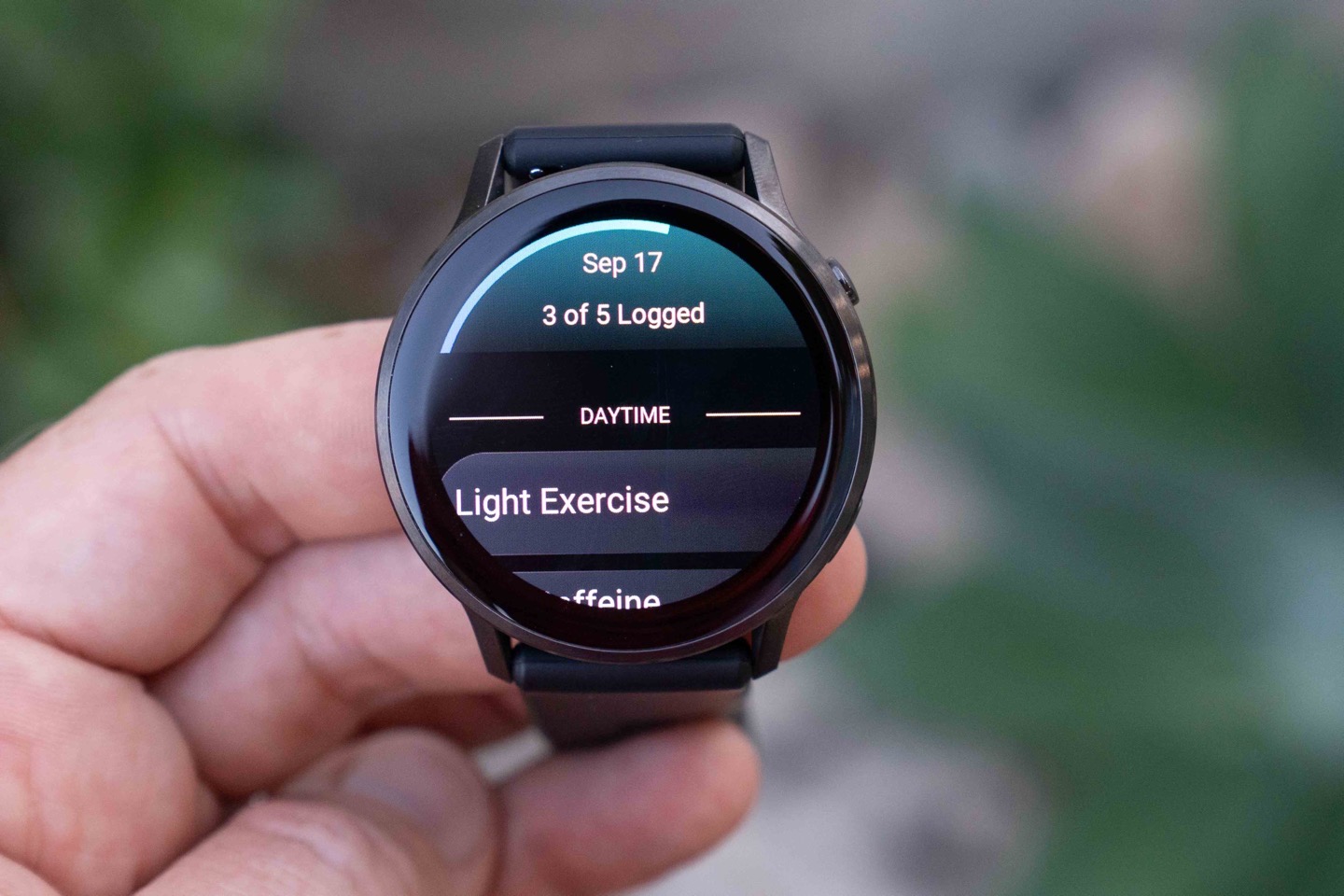Garmin has just announced their Venu 4 & Venu 4S watches, which are their mainstream but sportier competitors to the Apple Watch, Google Pixel, and Samsung Galaxy Watch. And at first glance, based on the relatively thin marketing materials, these would seem to be a letdown.
However, in reality, this watch is actually just a Forerunner 570 with a different case, a flashlight, and ECG. That means it’s a massive upgrade over the existing Venu 3, whether you wanted it or not. This means a ton of new sport features, especially around running and triathlon, training load/status, as well as expanded sensor support, and a full metal case. Albeit, we lost a button. RIP button.
But it also has new-to-Garmin features too, primarily around sleep and health tracking, like Sleep Alignment and Lifestyle Logging. But it also adds a number of new accessibility features including spoken watch faces, spoken health data, color filter options for color blindness, and more.
So, let’s dig into all the newness and how it compares.
What’s New:

The Venu 4 is a substantial upgrade over the Venu 3. Perhaps the most notable thing out of this entire list is the least flash: It’s now on the same shared ‘Garmin OS’ platform that most other 2025 watches are using, including the Fenix 8/8 Pro, Forerunner 570/970, and Venu X1. But that doesn’t mean it has every feature, rather, it just means that it’s finally sharing a common underlying OS. So new features can be more quickly added across all units, which should improve quality (rather than each team doing their own dance).
In any case, here are all the new features compared to the Venu 3, though I’m frankly probably missing a bunch of tiny new settings and such, given the platform shift.
– Added LED flashlight (white & red)
– Increase display brightness/nits (matches Forerunner 570/970 displays)
– Added multiband/dual-frequency GPS/GNSS
– Added spoken watch face (for accessibility)
– Added spoken health data (for accessibility)
– Added color filter option (for color blindness accessibility)
– Added new Sleep Alignment feature (circadian rhythm tracking)
– Added new Sleep Consistency feature
– Added Lifestyle Logging on-device (plus all users get on Garmin Connect)
– Added Health Status on-device (plus all all users get on Garmin Connect)
– Added full Training Load suite (Acute Load, Recovery, etc…everything!)
– Added new sports/workout profiles (listed below)
– Added Auto Track Detection
– Added new Mixed Session (sport profile)
– Added AutoLap by timing gates
– Added Suggested Finish Line estimates
– Added Load Ratio
– Added Projected Race Time predictor
– Added Heat & Altitude Acclimation
– Added Evening Report
– Added Garmin Triathlon Coach training plans
– Added structured multisport/triathlon custom workouts
– Added Focus Modes
– Added Large Font UI Option
– Added new sensor types: Added Extended Display, Club Sensors, inReach, Shifting, Shimano Di2 (previously had: HR, Headphones, Speed/Cadence, eBike, Lights, Power, Radar, Smart Trainer, Footpad, Tempe)
– Added support for up to 4 CIQ data fields concurrently (versus 2 previously)
– Consolidates to Garmin’s standard underlying firmware platform for Venu/Fenix/Forerunner 2025 watches (Garmin OS)
– Added metal case (previously just metal bezel)
– Removed third button for funsies
– Decreased battery life slightly on larger unit (smaller is same)
– Still offered in two sizes – 41mm and 45mm
– Increased price by $150 to $549 (was previously $449)
Now, on that pricing piece, I pushed back a bit on a discussion with Garmin about it, asking why there was a $100 price increase. Ultimately, they said that the Venu 4 unit is essentially a choice of whether a user wants a touch-first watch (the Venu 4), or a button-first watch (Forerunner 570). Both are priced the same, except the Venu 4 has ECG whereas the Forerunner 570 doesn’t.
They noted that while sportier people want that button-first approach and sporty look of the Forerunner series, many more mainstream folks want a sleeker metal-encased look of the Venu 4.
The bigger question though, gets into leaving a substantial pricing/market gap at the previous $400-$450 price range that Apple/Google/Samsung occupy with their very capable fitness watches. More on that later on.
Some Early Thoughts:

Even if Garmin itself doesn’t make it clear in their own marketing materials and site, there’s no question this is a massive upgrade over the Venu 3 (with a huge increase in features, especially for sportier folks). It’s literally a Forerunner 570 with ECG, a Flashlight, and a few lost buttons. All for the same price. With the big codebase merge behind the scenes, the users are the biggest benefactors in terms of not just tons of new features they might not have otherwise gotten, but hopefully also software stability. While this past summer was rough (at best) for most of these new devices as that merger happened, at this point, things seem much better.
The challenge though, isn’t that Garmin has delivered a ton of value in this product (at least, ignoring the lack of maps). Instead, it leaves a really odd and big-sized gap for all their competitors to play in. Garmin has effectively abandoned the $400-$499 price range that is the most popular realm for mainstream watches. Sure, they have Instinct and a few others floating in there, but those aren’t the same customers (else, Garmin wouldn’t have 2,318 models).
And while they have the Vivoactive 6 with many core Venu features, that sits at $299, so effectively undercutting not just their competitors, but also honestly undercutting Garmin’s own Venu 4 products as well. Previously, you could make the case to pay an extra $100-$150 for certain Venu 3 features. Now, making the jump nearly twice the price seems tough.
Garmin will probably grumble that I always complain about price. And sometimes, that’s true. But inversely, the also-announced Garmin Bounce 2 today saw a price increase, but that one is frankly very justifiable. The original Bounce 1 LTE was always priced bizarrely low (in a good way, obviously), floating around $125-$149. Now, at $299, that’s the same price Apple is charging for their Apple Watch SE cellular which has the kid software/experience wrapper for. And while these two watches are different, I think Garmin competes very strongly for the younger child demographic, especially.
Anyways, we’ll have to see how the market reacts here (in terms of sales). As I noted in the video, the product execution itself is quite good – I just remain convinced on the reasoning to have a massive price-gap in their lineup.
Nonetheless, more to come. With that – thanks for reading!

0 Commentaires